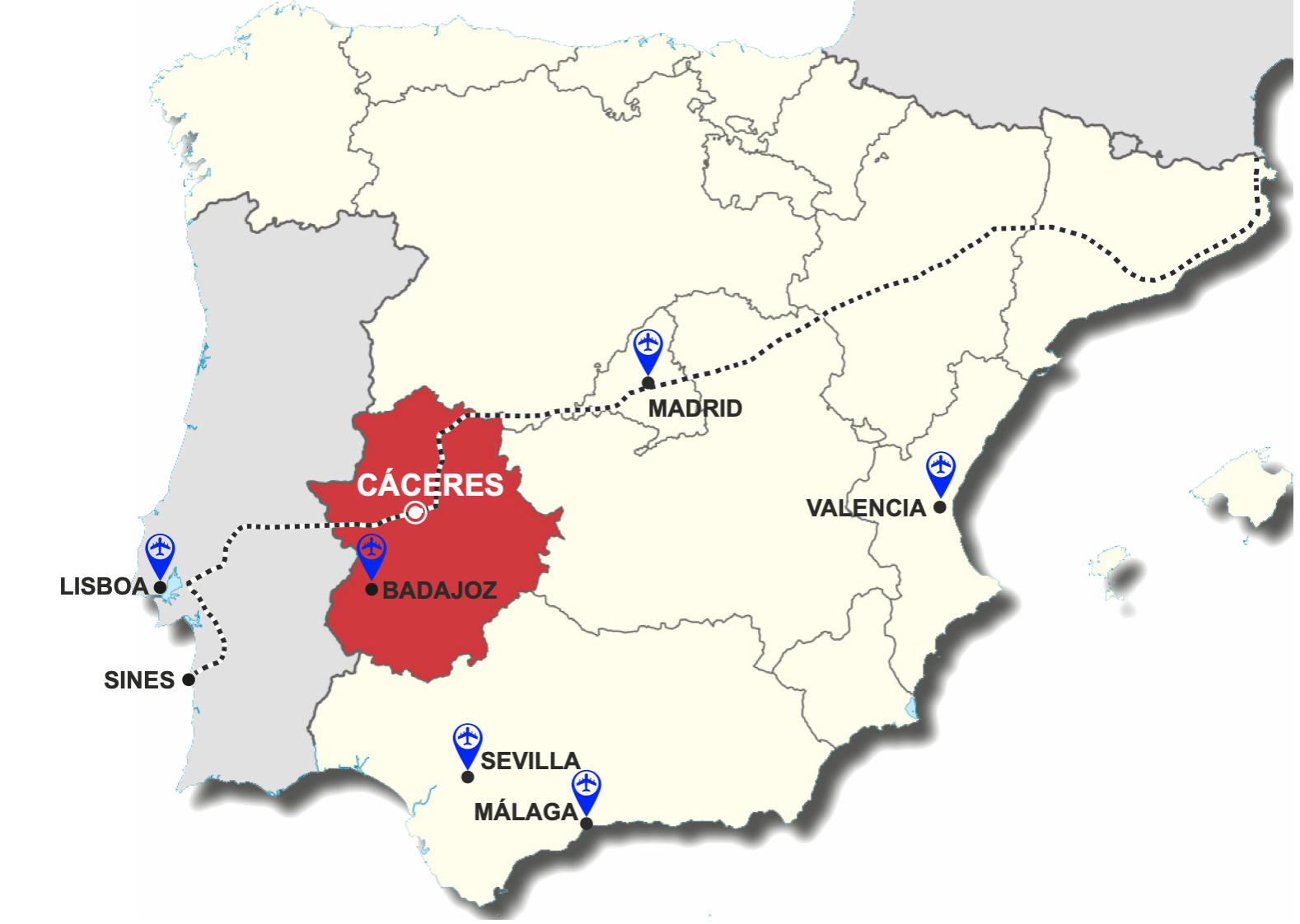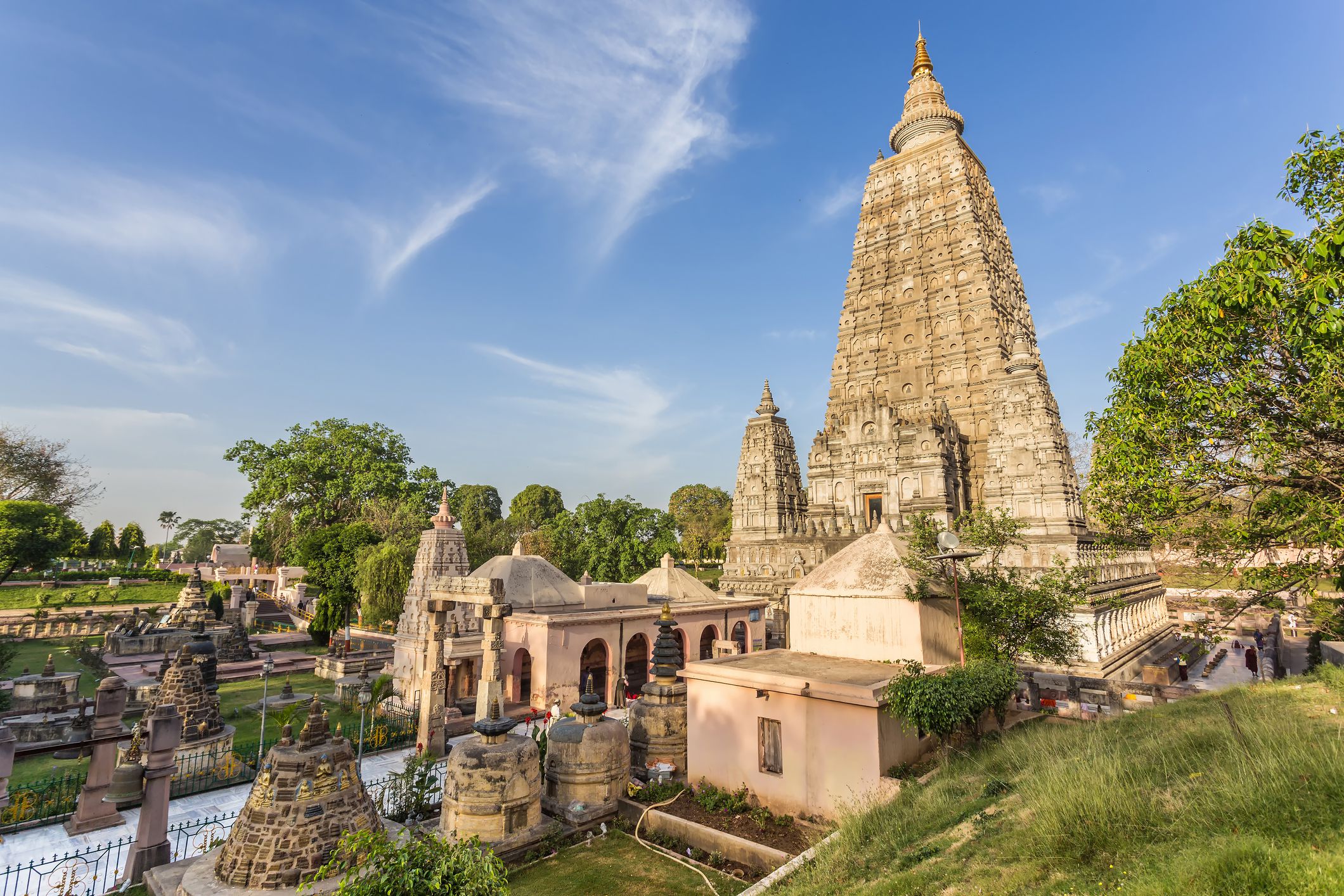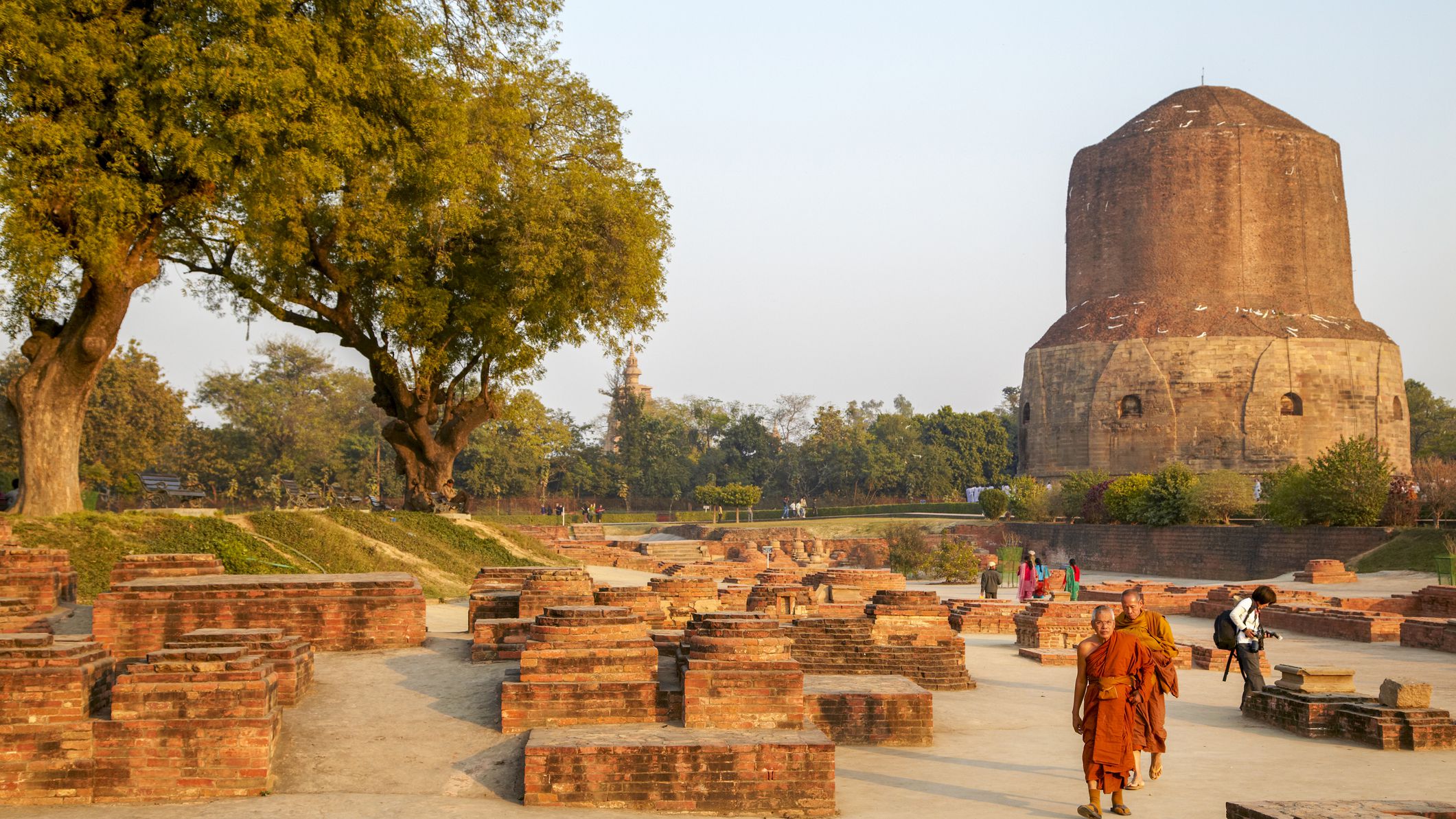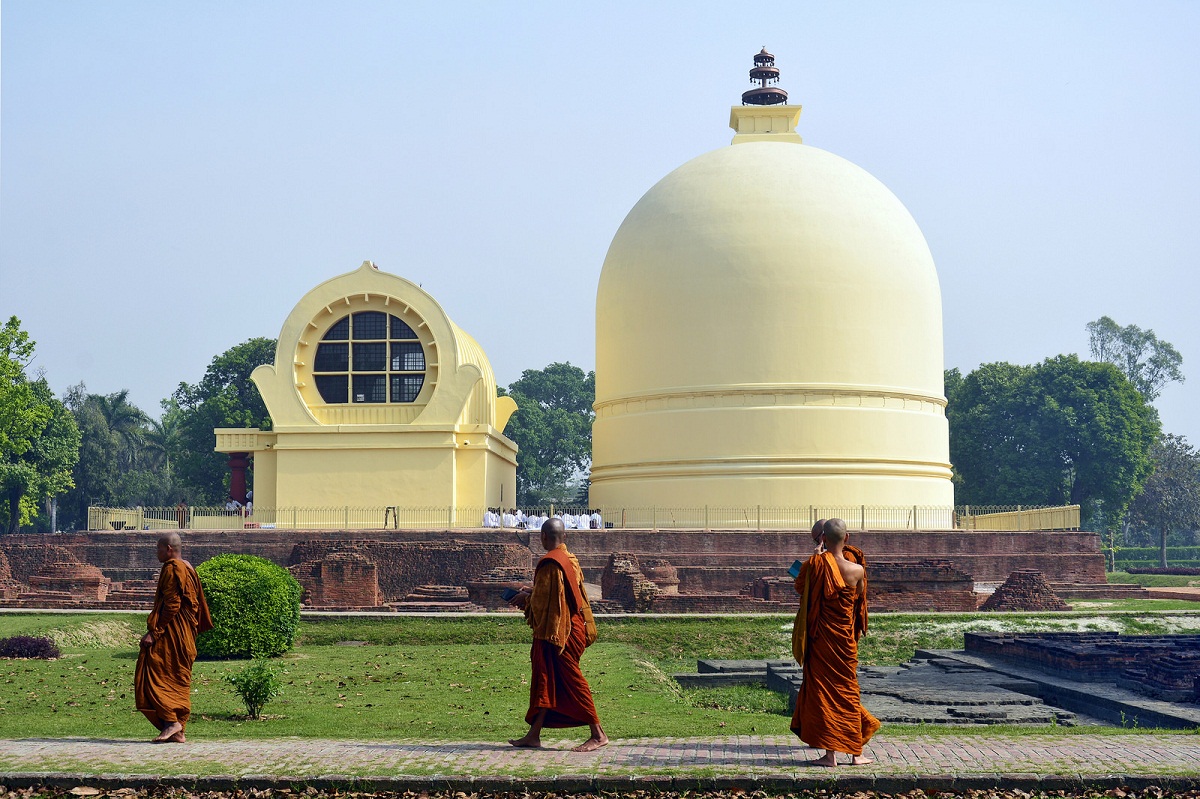Cáceres the Fifth Holy Land
A holy place where Buddha comes into contact with human.
Cáceres
the
Fifth
Holy Land
A holy place where Buddha comes into contact with human.

In Buddhism, the holy land is a holy place where the Buddha comes into contact with humans. Today there are only 4 holy lands in historical Buddhism: Lumbini, Bodghaya, Sarnath and Kushinagar. In these cities, the Sakyamuni Buddha was born, enlightened, gave his first sermon and died. These territories are sacred to the international Buddhist community and recognized as a place of pilgrimage and encounter with Buddha. Outside of Asia there is no sacred places like these for Buddhists.The planet urgently needs a “Change of Consciousness”, that directs the future of humanity through kind and compassionate love (Mettā/Maitri) and take us out of, ambition, selfishness and egos, values that guide our lives today. In Buddhist scriptures, it is written that the next Buddha, Maitreya, will be recognized as the Buddha of compassionate love and will be born in distant lands. The Buddha Sakyamuni or the enlightened one thus gives way to the Buddha of compassionate love Karuna.

Construction of the great White Jade Karuna Buddha in Europe. Cáceres, Spain
A 40 meter High Statue with a 20 meter High Base will seat on the higher point of the holy land.
This universal construction in the West, is a plea to the Love and Compassion of the Human Being, which shows the need for the existence of a new "Being" on the planet. It is the "Light of Asia" that reaches western lands to create a beacon of light of love and compassion between different worlds and cultures to promote the great “Change of Consciousness” that humanity needs. The land of Cáceres, which will host a sacred figure for Buddhism, will be declared "Holy Land" by the Sangha of Asia, through the prayer and merit of the great Asian Buddhist temples that will recognize the sacred character of the city of Cáceres. This spiritual recognition within the Buddhist Community will be endorsed at the United Nations headquarters on 2021, so it will be officially in front of the eyes of the world that the Light of Asia reaches its meeting with the three great religions of the planet in the world heritage city of Cáceres.

The Four Holy Lands in the Buddhist World
Maya Devi Temple
Lumbini, the Birthplace of the Lord of Buddha
The Buddha was born around 623 BC in the sacred area of Lumbini located in the Terai plains of southern Nepal.

Lumbini is a Buddhist pilgrimage site in the Rupandehi District of Lumbini Province in Nepal. It is the place where, according to Buddhist tradition, Queen Mahamayadevi gave birth to Siddhartha Gautama in 623 BCE. Gautama, who achieved Enlightenment at the age of thirty five years old and became the Buddha. Lumbini was made a World Heritage Site by UNESCO in 1997, it is the Buddha's birthplace, one of the world's most important spiritual sites, and attracts Buddhist pilgrims from all around the world. Mayadevi Temple is the most sacred site in the Lumbini Garden area where archaeologists have identified the spot where Lord Buddha was born. It is said that the newly born Prince Siddhartha (later became the Buddha) took his first seven steps and delivered his peace message to humanity here.

Bodghaya – Mahabodhi Temple
Bodhgaya Temple was in the hands of its followers till the first part of the thirteenth century. From that time to the time of the arrival of the first Mahant at the site, we have no information about the Temple. A wandering Sanyasi (Saivite Hindu monk) named Mahant Ghamandi Giri arrived at Budhgaya in the year 1590 and decided to make the place his permanent residence. Bodh Gaya is a religious site and place of pilgrimage associated with the Mahabodhi Temple Complex in Gaya district in the Indian state of Bihar. It is famous as it is the place where the Buddha is said to have attained Enlightenment (Pali: bodhi) under what became known as the Bodhi Tree. For Buddhists, Bodh Gaya is the most important of the main four pilgrimage sites related to the life of the historical Buddha, the other three being Kushinagar, Lumbini, and Sarnath. In 2002, Mahabodhi Temple, located in Bodh Gaya, became a UNESCO World Heritage Site.

Bodghaya – Mahabodhi Temple
Sarnath is a city of India located in the district of Varanasi, State of Uttar Pradesh, India. It is one of the four holy cities of Buddhism, being the historical place where the Buddha for the first time preached the Dhamma/Dharma, and the cradle of the first Buddhist community, giving birth to the Sangha. According to the chronicles, two centuries after the Buddha's death, twelve thousand Buddhist monks lived in Sarnath. The city flourished, especially in terms of Buddhist art and religion, thanks to the patronage of wealthy kings and merchants from neighboring Benares. The Chinese pilgrim Xuan Zang reported in the 7th century that there were some 30 monasteries and 3,000 monks in Sarnath, as well as some Hindu temples and a Jain temple that still exists.
Sarnath – Dhamek Stupa
Sarnath is a city of India located in the district of Varanasi, State of Uttar Pradesh, India. It is one of the four holy cities of Buddhism, being the historical place where the Buddha for the first time preached the Dhamma/Dharma, and the cradle of the first Buddhist community, giving birth to the Sangha. According to the chronicles, two centuries after the Buddha's death, twelve thousand Buddhist monks lived in Sarnath. The city flourished, especially in terms of Buddhist art and religion, thanks to the patronage of wealthy kings and merchants from neighboring Benares. The Chinese pilgrim Xuan Zang reported in the 7th century that there were some 30 monasteries and 3,000 monks in Sarnath, as well as some Hindu temples and a Jain temple that still exists.


Parinirvana Stupa – Kushinagar
Kushinagar is a city in the district of Kushinagar, Uttar Pradesh state (India) and is one of the four holy cities of Buddhism, where the Buddha died. According to the Buddhist tradition, Gautama Buddha moved to Kushinagar along with Ananda and some other of his disciples monks (Bhikkhus) to receive death there and acquire Parinibbāna/Párinirvana (or final nibbāna/nirvana). In a mango grove a bed was prepared, where he exhorted his disciples for the last time and died. The Buddha's remains were transferred to the town of Makutabandhana located east of Kushinagar where they were cremated. The city became a pilgrimage center for Buddhists from all over the world and featured many monasteries and temples. It was visited by the Indian Emperor Asoka, a devout Buddhist, on his pilgrimage to all the Buddhist holy cities. Among the sacred monuments that are still preserved is the Mahaparinirvana stupa, attributed to the stupa that was erected in honor of Buddha after his death, the Buddha's own tomb although empty, since it is assumed that it left no physical remains and a 1500 year old Buddha statue.
